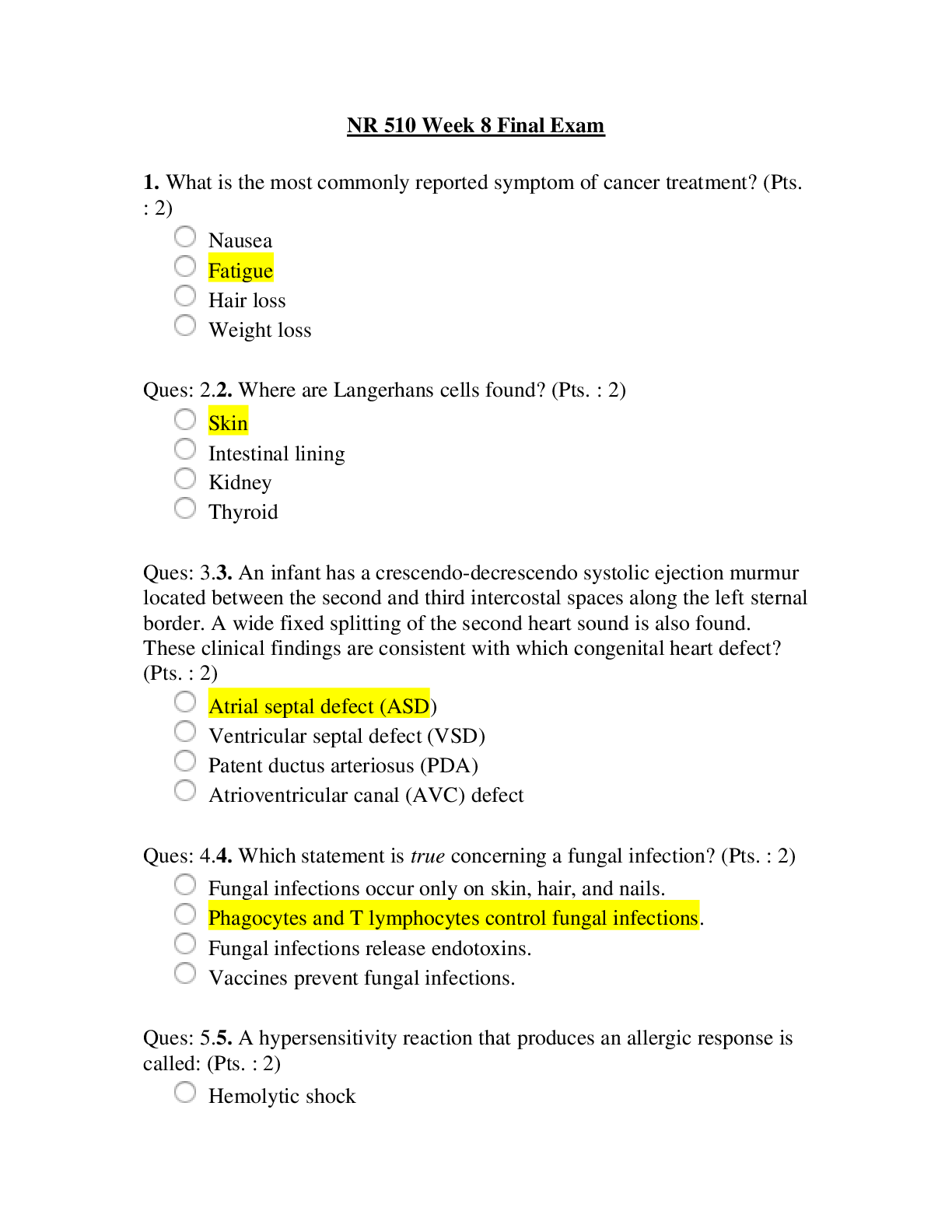*NURSING > QUESTIONS & ANSWERS > NR 283 Unit 1 Review of Knowledge Exam 1:Cell Genetic Cancer - Questions and Answers (Graded A) (All)
NR 283 Unit 1 Review of Knowledge Exam 1:Cell Genetic Cancer - Questions and Answers (Graded A)
Document Content and Description Below
Review of Knowledge (ROK) Course NR 283 Exam Exam 1 Purpose The Review of Knowledge (ROK) focuses on course outcomes, unit outcomes and key concepts to enhance student success on exams. Use t... his document as a focused guide for study in conjunction with assigned readings, PowerPoint presentations, and other course resources. Supplement this document by outlining your own notes from the textbook chapters and place your expanded more detailed notes in the Student Notes column. This document should NOT be used as a substitute for completing the assigned readings. Chapter 4 Cellular Alterations and Adaptation Key Concepts Chapters Student Notes Cell adaptation Cell alteration Cell necrosis Aging Frailty Somatic death Chapter 4 Atrophy-shrinkage of cell size Hypertrophy- increase in cell size –causes organ to enlarge. Dysplasia-abnormal Hyperplasia- increase in # of cells. Metaplasia- reversible replacement of on cell for another cell-these cells do not always act as the other cells. Cells will try to adapt to their environment. All forms of disease begin with cell injury. Cell death-necrosis-the sum of cellular changes after local cell death and the process of cellular autodigestion. Coagulative Necrosis-protein denaturation-kidneys, heart, adrenal glands Liquefative Necrosis- caused by bacterial infection- Staph, Strep, and E.coli- Neurons and glial cells of the brain. Caseous Necrosis- Combo of coagulative and liquefactive necrosis- Turberculous-pulmonary infection-looks like cream cheese. Gangrenous Necrosis- Death of tissue from sever hypoxic injury Dry-Wet-Gas Atrophy, decreased function of cell, and loss of cells. Leads to Progressive stiffness and rigidity. Sarcopenia-loss of muscle tissue due to aging. Delicate and unbalanced- mobility, balance, muscle strength, motor activity, cognition, nutrition, endurance, falls, fractures and bone density. Death of the entire person- cessation of breathing, and circulation. 3 postmortem changes- Algor mortis-temp change. Livor mortis- skin color change. Rigor Mortis- Muscle stiffness and rigidity Cell adaption includes, atrophy, hypertrophy, and hyperplasia and metaplasia. An example of atrophy is loss of muscle due to bedrest. Hypertrophy is an example of excess growth of the thyroid caused by over stimulation by hormones. When a muscle is used often and increases in size, it is considered an example of –hyperplasia. Cell accumulation injury can consist of water, proteins, bilirubin, hemosiderin or fat. When there is a lack of oxygen to the cell, ATP cannot be produced. The lack of oxygen will cause the sodium-potassium pump to fail. When the sodium-potassium pump does not work, sodium will remain in the cell where it attracts water from the extracellular fluid. This causes cellular injury. If the cell does not obtain enough ATP, damage will be complete and the cell will die causing cell death. Necrosis is unplanned cell death while apoptosis is planned cell death. Necrosis has been viewed as sum of cellular changes with cell death occurring in a local and unregulated manner. Apoptosis is a cell’s self-destruction process because the cell knows that the cell has been damaged. After it dies, it breaks up into little pieces where the macrophages come and clean up the apoptic bodies. Somatic death is defined as complete cessation of breathing and circulation function. Somatic death results in three types of mortis. These are known as livor mortis, algor mortis, and rigor mortis. Livor mortis is the color of the skin that develops when the blood settles after death. Algor mortis is the body temperature after death. Rigor mortis has to do with muscle tightening after death. [Show More]
Last updated: 2 years ago
Preview 1 out of 14 pages

Buy this document to get the full access instantly
Instant Download Access after purchase
Buy NowInstant download
We Accept:

Reviews( 0 )
$8.00
Can't find what you want? Try our AI powered Search
Document information
Connected school, study & course
About the document
Uploaded On
Nov 16, 2020
Number of pages
14
Written in
Additional information
This document has been written for:
Uploaded
Nov 16, 2020
Downloads
0
Views
89

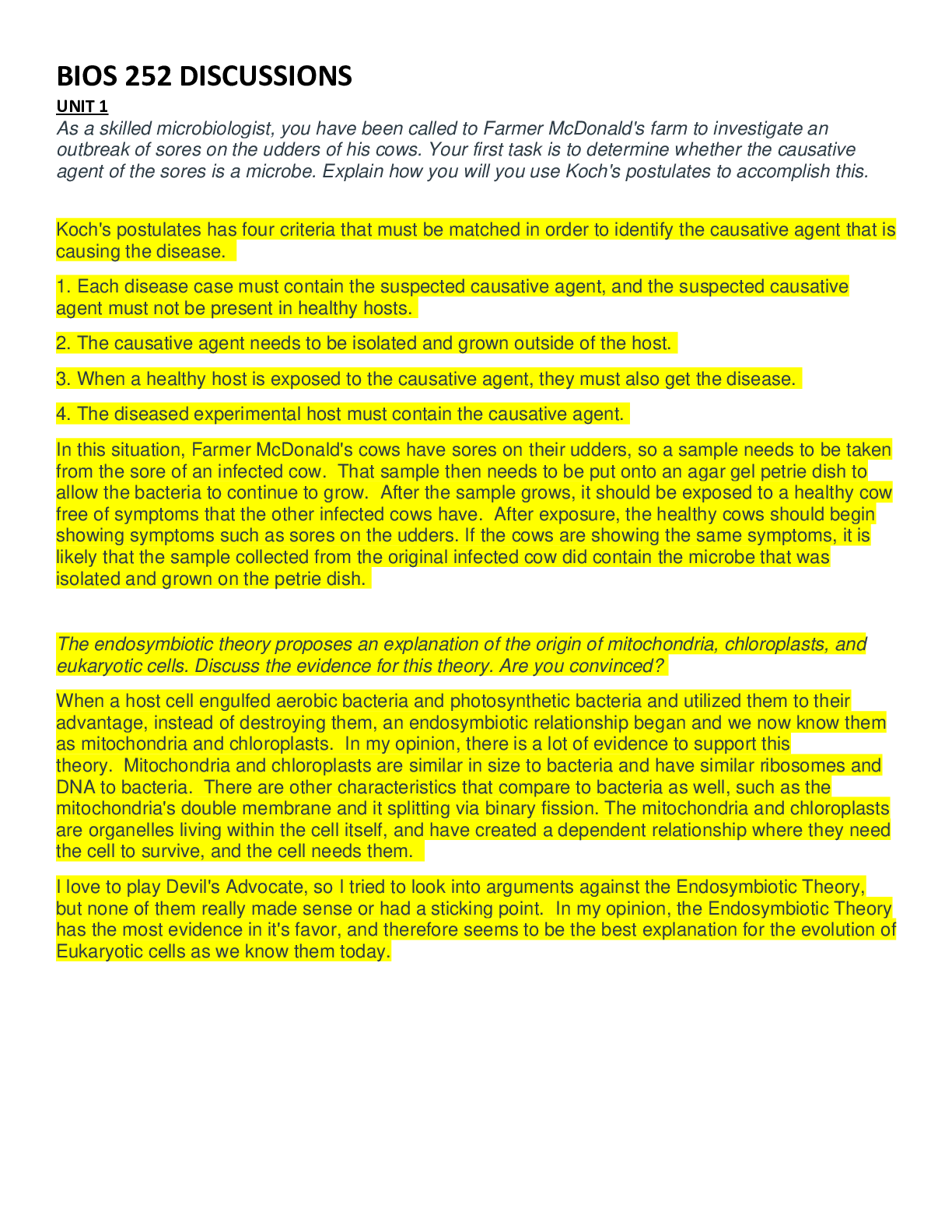
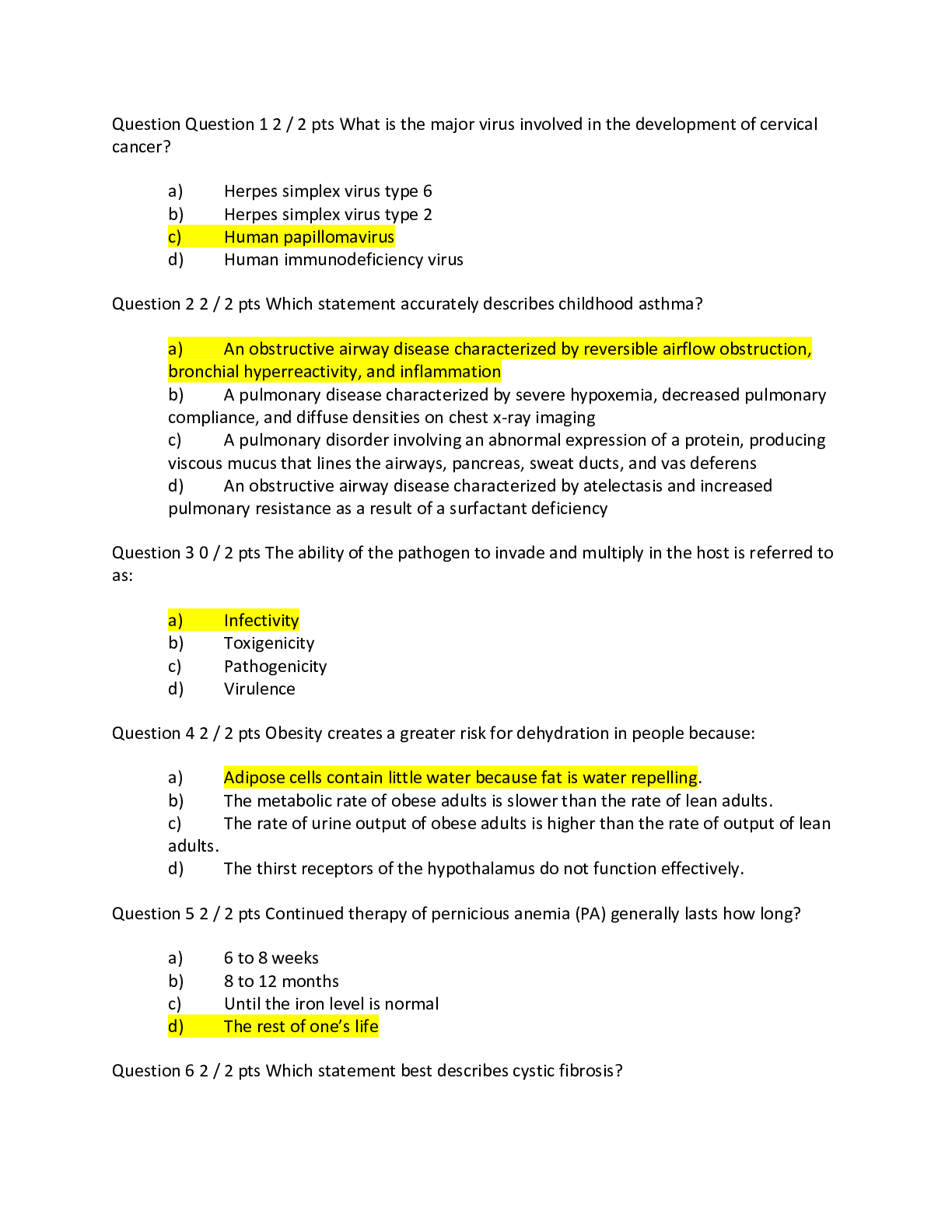



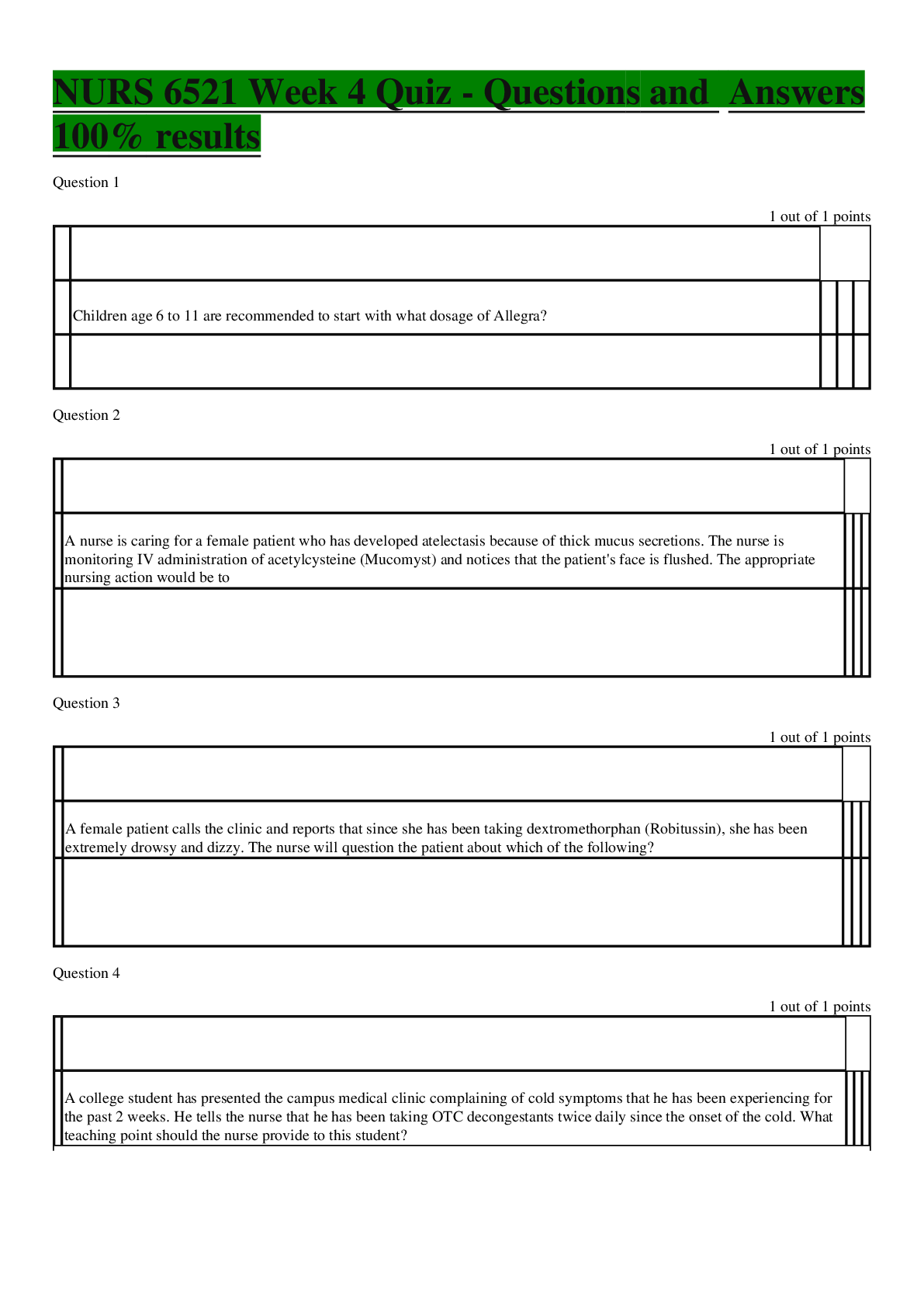
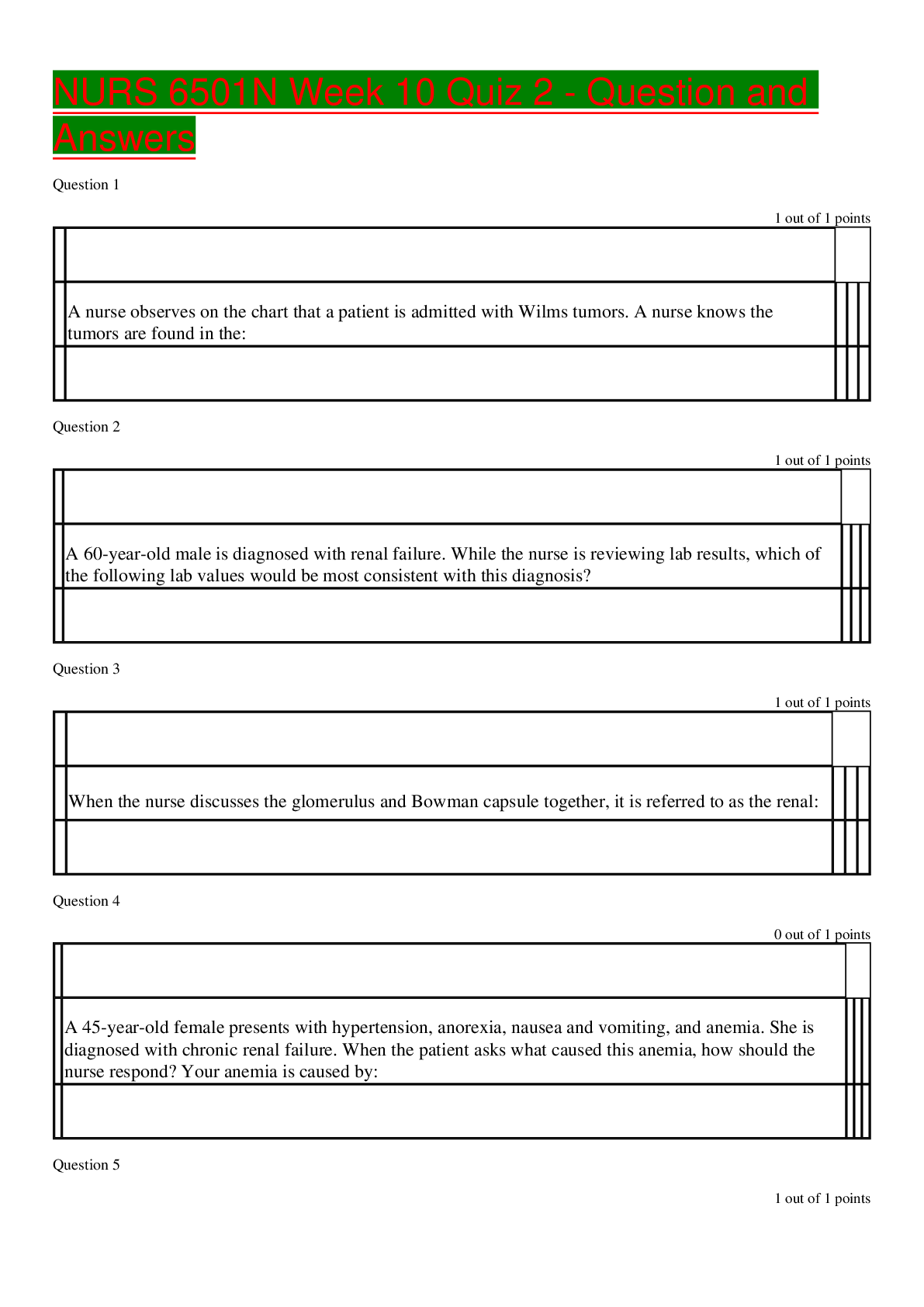


 - Questions and Answers with Explanations, 100% Correct, Download to Score A.png)

